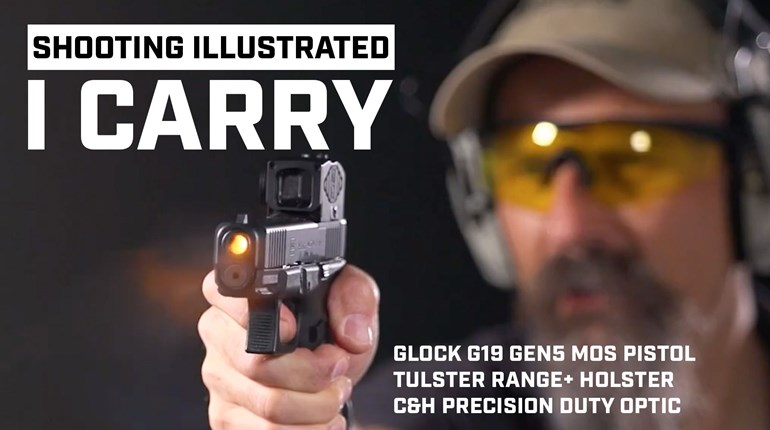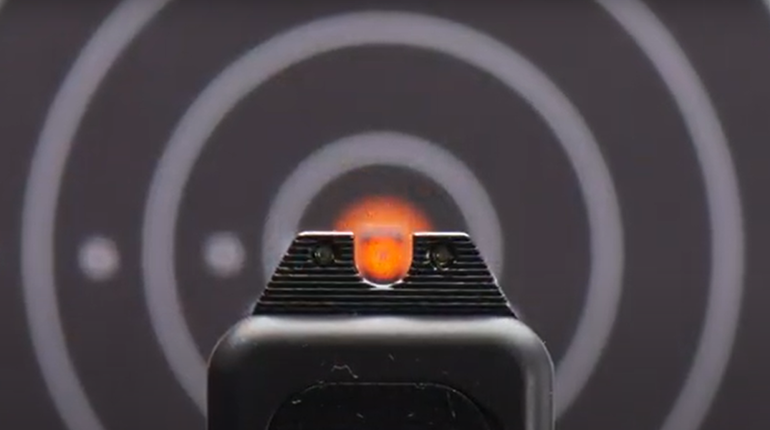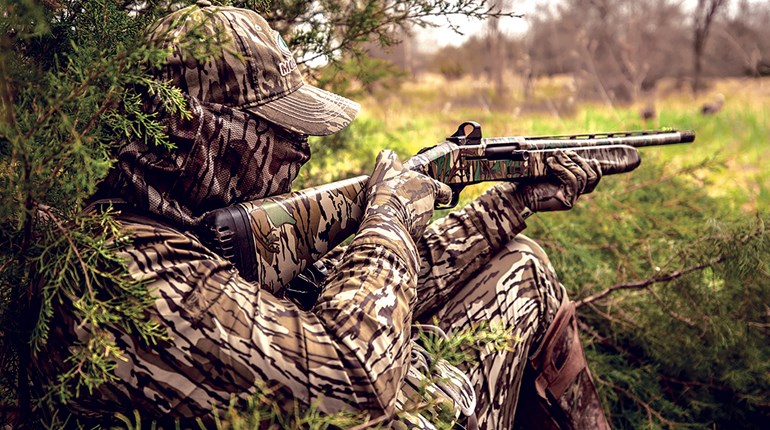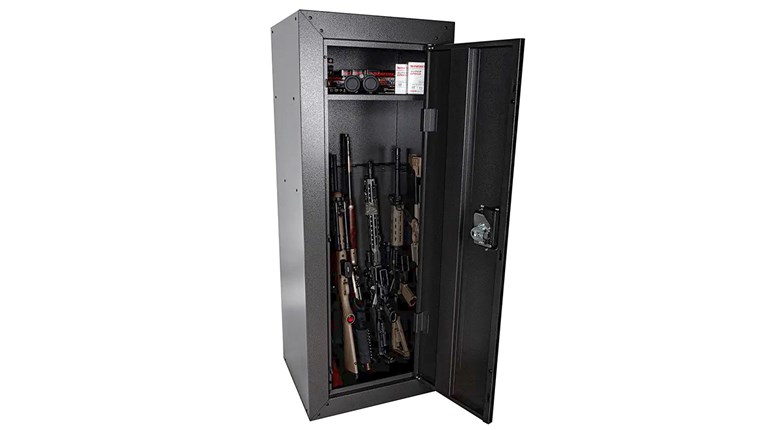
At one time reflex sights (or red dots, if you prefer) were the domain of law enforcement, military professionals and top competitive shooters. Over time, the rest of the shooting world slowly began gravitating toward reflex sights, and today most new pistols being rolled out today have slides that are pre-cut for optics.
Why this sudden shift toward pistol-mounted optics? Cool factor, for one thing. Imitation is supposed to be the sincerest form of flattery, and that’s certainly true in the firearm world. When the top shooters in the nation carry pistols with optics, it’s only a matter of time before the shooting public does the same. But, what are the real advantages of reflex optics, and can the average shooter benefit from reflex optics?
Reflex Optics: The Good and the Bad
It’s been proven in pistol competition that reflex sights can improve your speed and accuracy. The key word there is "can," because odds are that if you start shooting a red dot and pistol having only ever fired guns with iron sights you likely will neither be more accurate nor faster. In fact, you may spend time looking foolish as you spend time craning your neck and wagging the sights as you try to find the dot.
No, reflex sights don’t automatically make you a better shot, but once you learn to shoot them efficiently you’ll likely be better than you ever were with iron sights. That’s because reflex sights offer a precise aiming point that allows you to align objects on two planes (the dot and the target) as opposed to three (front sight, rear sight, target). Many new shooters struggle with the concept of front sight focus when shooting pistols equipped with iron sights, but they get the concept of positioning the dot where you want to strike the target.
Understanding the concept and applying that concept to real-world applications are very different processes, though. The concept of red dots is deceptively simple. However, making that dot appear quickly and consistently on your target following a draw stroke can be challenging.
Red-dot sights are allowing shooters with aging eyes to shoot better, too. A loss of visual acuity is a natural part of the aging process, and at some point it becomes difficult for most people to use iron sights efficiently. Sometimes even corrective lenses don’t help the problem. However, a reflex sight can help those shooters produce tight groups. And, of course, reflex sights offer a consistent aiming point in any light conditions, so as long as you can see your target you can shoot your gun accurately.
Convinced that reflex sights might be right for you? Well, you’ll need to know some basics before you begin if you want to shoot quickly, consistently, and accurately. These four tips will help flatten the learning curve when shooting red-dot optics.
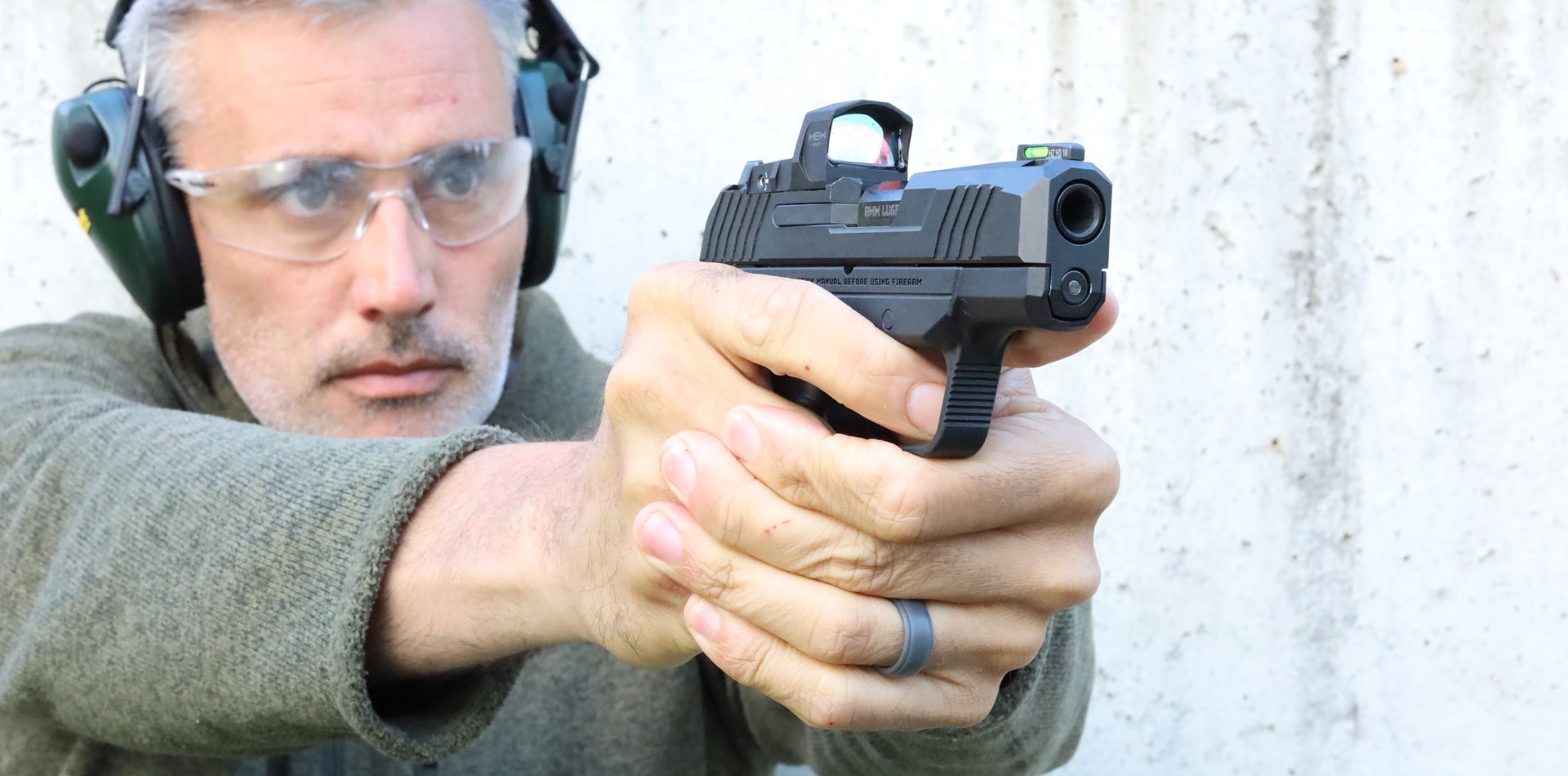
Fit and Installation
To be accurate, reflex sights must be securely mounted to your pistol because any shift in the sight’s position results in a shift in point of impact. This all sounds very elementary, like telling someone that they need air in their automobile tires. However, a significant portion of the people who tell me their new red-dot-equipped pistol isn’t working simply have loose or ill-fitting optics. Sight security has never been an issue with their iron-sighted pistols, so they don’t think to examine their reflex sight.
First and foremost, read the manual for both your optics and your pistol. Determine which base is needed for your optic, and make sure that the screws you are using are the correct length and thread pattern. Perhaps most importantly, tighten optics screws to manufacturer specifications (which will require a torque wrench with an inch/pounds gauge, not guesstimation). One of the top optics manufacturers told me that overtightening and stripping screws is one of the primary causes of optics failures, both on reflex sights and magnified optics. Once your reflex sight is secure on your pistol it is ready to survive the abuses of daily carry and still perform consistently.
Dot Size/Color/Intensity
As with installation, selecting dot size, color, and intensity impacts your success with a reflex sight. Let’s begin with dot size. Dots are measured in MOA, so a 1-MOA dot covers roughly 1 inch of the target at 100 yards. That’s great for precise shooting, but it’s a very small aiming point for personal defense. Most pistols sights fall somewhere between 3 and 6 MOA, which is suitable for close to moderate-range pistol shooting. Which you prefer is a matter of personal taste. Personally, I prefer the 3-MOA dot, and that’s partly because I hunt with a handgun and use a 3-MOA dot to do so, and as a result a 6-MOA dot is large enough to be distracting. I know that’s I’m in the minority there as most instructors and accomplished shooters prefer 6 MOA for their defense pistol, but you will have to find the correct dot size for you. Oftentimes that’s simply a matter of holding up two reflex sights next to one another at the optics counter and seeing which you prefer.
Dot color is another matter of personal taste, but since the human eye does see green more clearly than red a green dot will be more visible to most people in a wider variety of lighting conditions, particularly full sun. The nickname “red-dot sights” is a pretty clear indicator that red is, in fact, the most common color choice for reflex optic dots, and I have no issues with red dots. In fact, all of my pistols but one are equipped with red-dot optics. There’s a more limited selection of green-dot optics, but I find that green dots are slightly easier to find on sunny days than red dots, so I don’t have to match intensity as perfectly.
Speaking of intensity, you don’t want a “halo” around your sight. If the dot does not have clearly defined edges it is too bright and accuracy will be compromised. Many reflex sights have an auto intensity adjustment feature, but you should always be certain that the auto adjust matches your eyes. If not, you should manually set intensity for maximum accuracy.
Consistency
This is the key to using a red dot effectively. When drawing a pistol with a reflex optic you want the pistol to land in the same position relative to your eye with each draw. Because your eye will not always be looking in the same direction (you may be shooting at a target above, below, or to the left or right) you must base your draw stroke on your line of sight, and this means you’ll have to use your eye as a reference point.
To do this, begin by developing a consistent grip and draw stroke. Grab the pistol high every time, draw straight up, rotate and extend the gun in front of the bridge of your nose. Remember that, unlike iron sights, reflex sights encourage target focus, you need to create a consistent draw that positions the optic in the line between your eye and the target. Working backward, practice drawing the gun, extending from the nose, and placing the window of the optic on that line between the eye and target each time. If you lose track of the dot you can use the pistol’s front sight as reference point to locate it.
A lack of consistent, repetitive practice is the reason that many shooters struggle with reflex sights. Instant alignment of the optic window with the plane of the eye and the target takes time, just as it takes time for baseball players to align a swinging bat with an incoming ball. The primary reason shooters struggle with reflex sights? They haven’t committed to them. If you buy a gun, mount an optic and expect that it will automatically fix your shooting you’ll be disappointed. But, once you become proficient with a reflex sight you’ll most likely shoot better than you ever could have with irons.
The Weak-Hand Thumb
I got a tip from a top pistol shooter that helped improve my reflex sight shooting immediately, and it involved the thumb on my weak hand. Most people shoot pistols using a modern two-thumbs-forward approach during which the thumb of the non-shooting hand is being thrust directly toward the target. Learning to position your hand so that the optic is in your line of sight will take some time, but learning to position your thumb will not. Since our earliest days we are learning to master fine motor skills, and that requires an intimate understanding regarding the relative position of our hands and fingers and our body. This is the reason you can pick up a fork, pull a credit card from a crowded wallet, or pluck a stray piece of lint from the arm of your best suit.
As you’ve learned to do these tasks you’ve also developed an innate understanding of the position of your digits, and that brings us back to pistol shooting. The fastest and most efficient way to quickly improve your reflex sight skills is to start driving your weak-side hand directly toward the target before your face. Odds are that if you use your weak-hand thumb to “point” at the center of the target you’ll learn to align your reflex sight quickly. I can’t tell you all the secrets regarding how this technique works, but it does. Try it for yourself.












